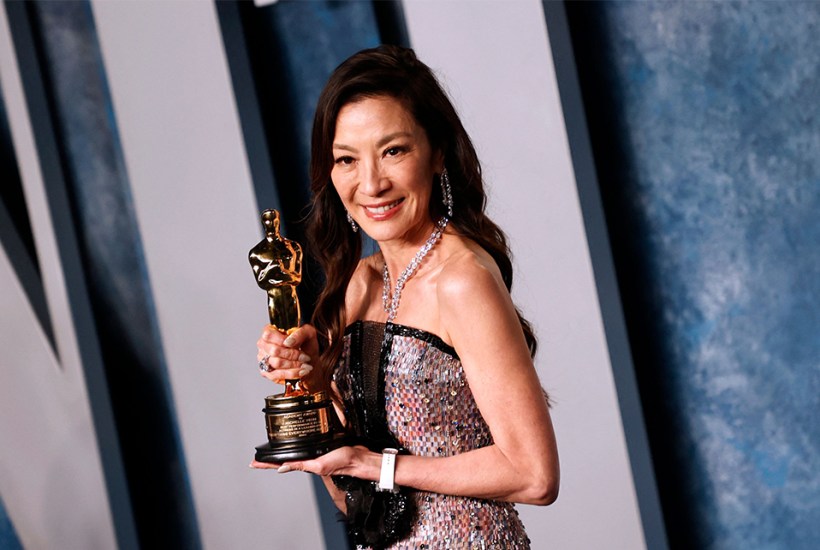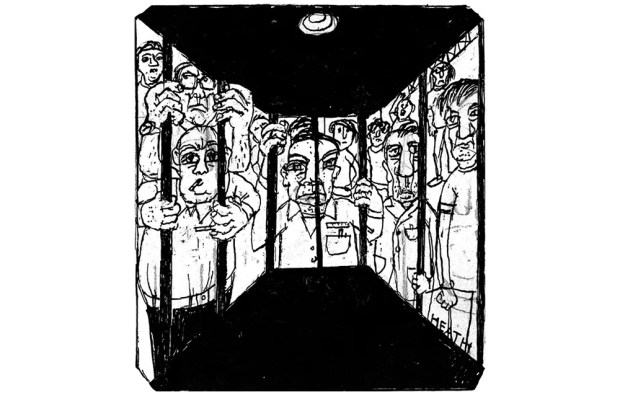This week Michelle Yeoh became the first Asian to win Best Actress at the Oscars – and not by playing a wise mentor, a martial arts fighter or an exotic villain, those classic Asian pigeonholes. No, the 60-year-old played a struggling immigrant mum in the mind-bending film Everything Everywhere All at Once, which also won Best Picture and Best Original Screenplay. Yeoh, who is Chinese-Malaysian, dedicated her acceptance speech to ‘all the little boys and girls who look like me’.
You don’t need to be little to appreciate the moment, though. For much of my life, Asians have been firmly out of the spotlight. But in the past few years, there’s been a noticeable change in Hollywood, with far more films portraying East Asians, made by talented East Asian directors. I’ve watched these films keenly, their stories helping me come to terms with my own identity and the difficulties of being a first-generation immigrant.
Here in the UK, East Asians don’t get so much screen time. After my family left China for London when I was nine, I seldom saw faces like mine on the telly. Over time, representation of other minorities has got better, but it seems that East Asians are still largely missing from public life.
How many British-East Asian politicians or newsreaders can you think of? Or actresses or novelists? There are more than half a million of us in the UK, but you can probably count the number of public figures of this heritage on two hands. There’s Alexa Chung and Gemma Chan, a couple of TV chefs and one or two MPs, but beyond that, it’s hard to think of any well-known East Asians.
I don’t doubt that prejudice once prevented people like Michelle Yeoh from succeeding in Hollywood. LA is notoriously shallow. And there is still discrimination against Asians elsewhere in American life. Ivy League colleges have been shown to discount Asian applicants in the name of affirmative action for other ethnicities. Parents are fighting back in the courts.
British-East Asians don’t yet suffer these kinds of indignities. In fact, I’m pretty thankful for my parents’ good sense in migrating to, objectively, one of the least racist and most diverse countries in the world. But I still think it’s worth asking why there are so few yellow faces in public life compared with the US. One explanation comes down to a simple quirk of history. America is just easier to get to for East Asians. People have been crossing the Pacific in search of prospects or freedom for more than a century. In the 1880s, a tenth of the Californian population was Chinese, many drawn by the gold rush (the Chinese name for San Francisco is ‘Old Gold Mountain’). By comparison, the history of empire means that Britain’s links with the Indian subcontinent and the Caribbean are much stronger.
These patterns remain today. While Asians make up a similar proportion of the population in the UK and the US (around 7 per cent), more than 70 per cent of the British Asian community is from South Asia – India, Pakistan or Bangladesh – whereas half of Asian-Americans are Chinese. No wonder that, when riding the subway in San Francisco last year, at times I felt like I might as well have been in China with the number of East Asian faces I saw. Head to Washington, DC, and you’ll find plenty of Asians in American politics and journalism too.
This history goes a long way to explaining the relative difference in East Asian representation, but it’s not just a numbers game. I have a theory that it’s also about the length of time a community spends in the country. The high-profile industries – film, TV, journalism, politics – tend to be prestigious but poorly remunerated, and employment is not guaranteed. In my experience, prestige does not always translate across cultures, and certainly for first-generation immigrant families, social status isn’t what puts food on the table. The Chinese talk about ‘an iron rice bowl’ – a job that will always provide.
Over time, immigrant children and grandchildren assimilate. They are educated in mainstream schools. Perhaps these kids marry out, perhaps they lose their ancestral tongue, and these second- and third-generation immigrants become more like the native population in their values and dreams. Life becomes less about scratching out a livelihood and more about pursuing particular aspirations. They start to imagine other careers beyond the golden trifecta of law, medicine and finance. Eventually, they go against family wisdom and start to break into the prestige industries – or this, at least, is the spiel I give my mother when she asks why I’m not in the City earning much more. ‘It’s because I’m so integrated, Mum.’
Some of America’s most successful Asians follow this pattern. Take the Long Island native Nora Lum, born to a family of Cantonese restaurateurs, who in 2019 became the first Asian-American actress to pick up a Golden Globe. Her film The Farewell is a story of a dying grandmother
and granddaughter bridging their cultural gap. Or look at the Denver-born director Lee Isaac Chung, who dropped out of Yale to study filmmaking. His film, Minari, is the story of his Korean parents trying to live the American dream through a small Arkansas farm.
It’s uplifting to see East Asians gain a higher profile in American public life. If my theory is right, it is only be a matter of time before there is a similar breakthrough in the UK, especially now that we have welcomed 144,000 Hong Kongers. Many of them are educated and want to participate in our democracy, just as the Ugandan Asians did before them.<//>
Got something to add? Join the discussion and comment below.
Get 10 issues for just $10
Subscribe to The Spectator Australia today for the next 10 magazine issues, plus full online access, for just $10.
You might disagree with half of it, but you’ll enjoy reading all of it. Try your first month for free, then just $2 a week for the remainder of your first year.















Comments
Don't miss out
Join the conversation with other Spectator Australia readers. Subscribe to leave a comment.
SUBSCRIBEAlready a subscriber? Log in